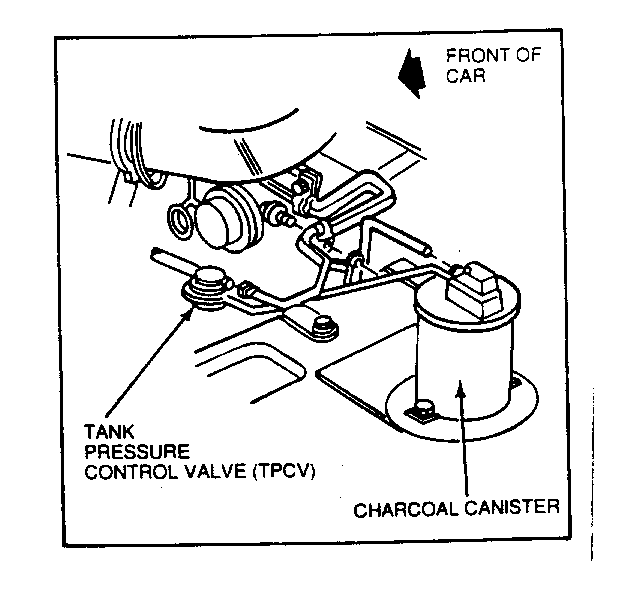FUEL TANK POP NOISE ON MORNING START(REMOVE,INSTALL NEW TPCV)

SUBJECT: FUEL TANK POP NOISE ON MORNING STARTS DUE TO TANK PRESSURE CONTROL VALVE (TPCV) (REMOVE, INSTALL NEW TPCV)
VEHICLES AFFECTED: 1988-93 "C" MODELS
THIS BULLETIN SUPERSEDES AND REPLACES CORPORATE BULLETIN REFERENCE NUMBER 216303.** THIS BULLETIN IS BEING REVISED TO SPECIFY A DIFFERENT TANK PRESSURE CONTROL VALVE (TPCV) AND PART NUMBER AND TO ADD A MODEL YEAR. '
Some 1988-1993 Cadillac DeVilles and Fleetwoods may experience a condition of fuel tank pop noise during start up. This condition may occur due to vacuum accumulation in the fuel tank--typically in a morning start up. The release of the built up fuel vapour vacuum in the fuel tank at start up could cause a loud popping noise by the fuel tank.
A revised Tank Pressure Control Valve (TPCV), which has a fuel tank vacuum relief valve, can be installed to correct this condition.
To repair this condition use the following procedure:
1. Remove current TPCV.
2. Install revised TPCV, P/N 17089068.
WARRANTY INFORMATION:
For vehicles repaired under warranty use:
Labour Operation: J6337 (Valve, Fuel Tank Pressure Control - Replace) Labour Time: 0.2 Hours
ADD:
A-Diagnosis time: You may claim O-.3 hour depending on actual time performing diagnosis
NOTE: The previous bulletin acknowledged using TPCV, P/N 17091152, which is used on Eldorados and Sevilles. It can be used on DeVilles and Fleetwoods, however, the TPCV control vacuum cover tube must be rotated 180 degrees to align in the same direction as the canister tube. Refer to Figure 1. If the TPCV is not installed correctly, then the vehicle may experience a condition of high tank pressure. Therefore, to avoid having to rotate the TPCV for DeVilles and Fleetwoods another TPCV has been made available that is already in the proper alignment.
BULLETIN REFERENCES:
Corporate Ref. 216303
General Motors of Canada 92-6-120 Cadillac Division T-92-112

General Motors bulletins are intended for use by professional technicians, not a "do-it-yourselfer". They are written to inform those technicians of conditions that may occur on some vehicles, or to provide information that could assist in the proper service of a vehicle. Properly trained technicians have the equipment, tools, safety instructions and know-how to do a job properly and safely. If a condition is described, do not assume that the bulletin applies to your vehicle, or that your vehicle will have that condition. See a General Motors dealer servicing your brand of General Motors vehicle for information on whether your vehicle may benefit from the information.
